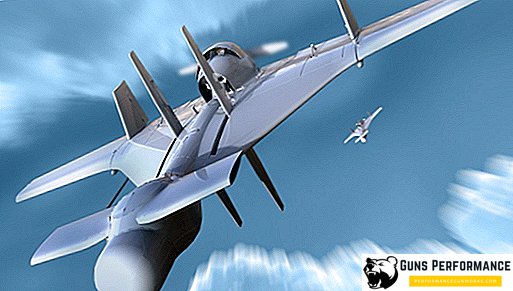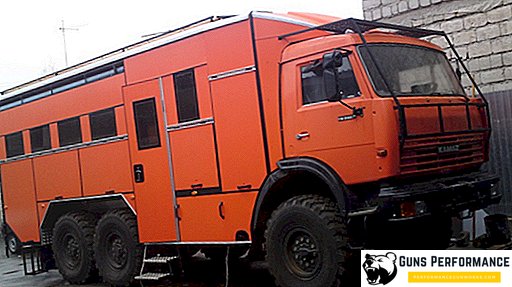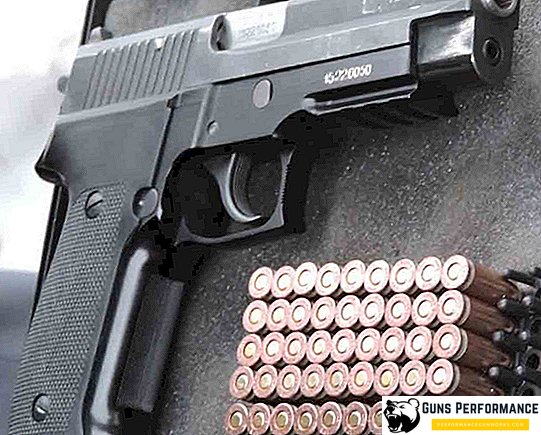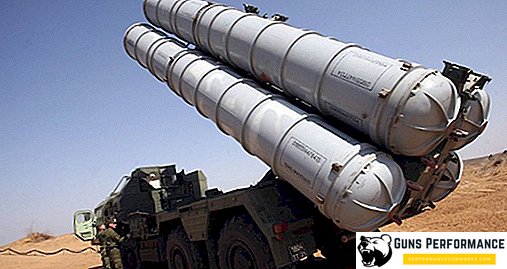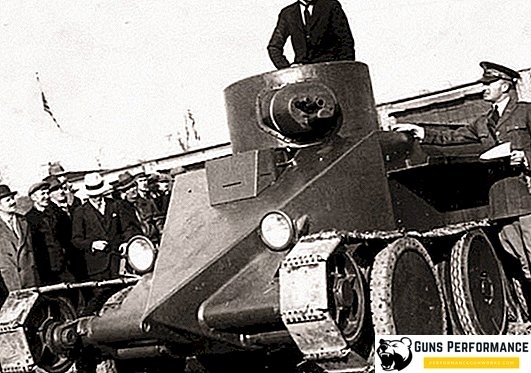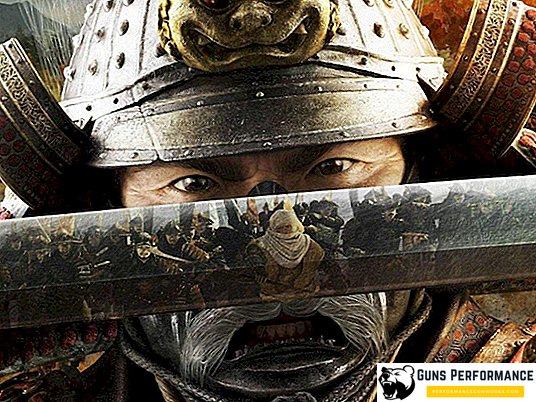
Any story about historical cold weapons will be incomplete without a story about medieval Japanese swords. This unique weapon has long faithfully served its masters — ferocious samurai warriors. In recent decades, the katana sword, as if, is experiencing a rebirth, interest in him is huge. The Japanese sword has already become an element of popular culture, katana is "loved" by Hollywood directors, creators of anime and computer games.
It was believed that the spirits of all its previous owners live in the sword, and the samurai is just the keeper of the blade, and he is obliged to pass it on to the next generations. In the samurai's will, there was necessarily a point at which his swords were distributed among his sons. If a good sword had an unworthy or inept owner, then in this case it was said: "The sword is crying."
The history of these weapons, the secrets of their manufacture and the fencing equipment used by medieval Japanese warriors are of no less interest today. However, before turning to our story, a few words should be said about the very definition of a samurai sword and its classification.

The katana is a long Japanese sword, with a blade length from 61 to 73 cm, with a slight bend of the blade and one-sided sharpening. There are other types of Japanese swords, they are mainly distinguished by their size and purpose. The word "katana" in modern Japanese means any sword. If we talk about the European classification of cold arms, then the katana is not a sword at all, it is a typical saber with one-sided sharpening and a curved blade. The shape of the Japanese sword is very similar to the sword. However, in the tradition of the Land of the Rising Sun, a sword is any type of (well, or almost any) cold weapon that has a blade. Even the naginata, similar to the European medieval glaive, with a two-meter handle and a blade at the end, is still called a sword in Japan.

Historians are much easier to learn the Japanese sword, than the European or Middle Eastern historical edged weapons. And there are several reasons:
- The Japanese sword was used in the relatively recent past. Katana (this weapon had a special name gun) was massively used during World War II;
- In contrast to Europe, a large number of ancient Japanese swords have survived to the present. Weapons, whose age is several centuries, are often in excellent condition;
- The production of swords according to traditional medieval technologies continues in Japan and today. Today, about 300 blacksmiths are involved in the manufacture of these weapons, all of them have special state licenses;
- The Japanese carefully preserved the basic techniques of sword fighting.
Story
The Iron Age began in Japan relatively late, only by the 7th century, Japanese blacksmiths had mastered the technology of making weapons from multi-layered steel. Up to this point, iron swords were brought into the country from China and Korea. The most ancient Japanese swords were most often straight and had a two-edged sharpening.

Period Heian (IX-XII century). During this period, the Japanese sword gets its traditional bend. At this time, the central government weakened, and the country plunged into a series of endless internecine wars and entered a long period of self-isolation. The samurai caste began to form - professional warriors. At the same time, the skill of the Japanese blacksmiths-gunsmiths increased significantly.
Most of the fights took place in the equestrian system, so a long saber gradually took the place of a straight sword. Initially, it had a bend near the handle, later it shifted an area 1/3 from the end of the shank. It was during the Heian period that the appearance of the Japanese sword was finally formed, and the technology of its manufacture was worked out.
Kamakura period (XII-XIV century). The significant improvement in armor that occurred during this period led to changes in the shape of the sword. They were aimed at increasing the strike power of the weapon. Its top became more massive, the mass of blades increased. Fencing with such a sword with one hand became much more difficult, so they were mainly used in foot fights. This historical period is considered the "golden age" for the traditional Japanese sword, and later many blade manufacturing techniques were lost. Today, blacksmiths are trying to restore them.
The Muromachi period (XIV-XVI century). In this historical period, very long swords begin to appear, the dimensions of some of them exceeding two meters. Such giants are the exception rather than the rule, but the general trend was on the face. A long period of constant wars required a large number of knives, often at the expense of its quality. In addition, the general impoverishment of the population led to the fact that very few people could afford a truly high-quality and expensive sword. At this time, the furnace Tatars are spreading, which allows to increase the total amount of steel produced. The tactics of the fights change, now it is important for the fighter to get ahead of the opponent in delivering the first strike, which is why katana swords are becoming more and more popular. By the end of this period, the first firearm appears in Japan, which changes the tactics of the battles.
The Momoyama period (XVI century). During this period, the Japanese sword becomes shorter, a pair of dysho comes into use, which later became classical: the katana long sword and the short wakizashi sword.
All the above periods refer to the so-called Age of old swords. At the beginning of the XVII century begins the era of new swords (Shinto). At this time in Japan, perennial civil strife cease, and peace reigns. Therefore, the sword is somewhat losing its combat value. The Japanese sword becomes an element of the costume, a status symbol. Weapons are beginning to richly decorate, much more attention is paid to its appearance. However, this reduces its fighting qualities.

After 1868, the era of modern swords begins. The weapons forged after this year are called gendai. In 1876, the carrying of swords was prohibited. This decision dealt a serious blow to the samurai warrior caste. A large number of blacksmiths engaged in the manufacture of blades, lost their jobs or were forced to retrain. Only at the beginning of the last century begins the campaign of returning to traditional values.
The highest part for a samurai was to die in a battle with a sword in hand. In 1943, the plane was shot down with Japanese admiral Yoroku Yamamoto (the one that led the attack on Pearl Harbor). When the admiral’s charred body was taken out from under the wreckage of the plane, they found a katana in the hands of a dead man, with which he met his death.

At the same time, for the armed forces, swords began to be manufactured industrially. And although they looked like a fighting samurai sword, these weapons no longer had anything to do with traditional blades made in earlier periods.
After the final defeat of the Japanese in World War II, the victors issued an order to destroy all traditional Japanese swords, but thanks to the intervention of historians, it was soon canceled. The production of swords according to traditional technologies was resumed in 1954. A special organization, the Society for the Preservation of Artistic Japanese Swords, was created, its main task was to preserve the traditions of making katanas as part of the cultural heritage of the Japanese nation. Currently, there is a multi-stage system for assessing the historical and cultural value of Japanese swords.
Japanese Sword Classification
What other swords, besides the famous katana, exist (or existed in the past) in Japan. The classification of swords is quite complicated, in the Land of the Rising Sun it belongs to the scientific disciplines. What will be described below is just a brief overview, which gives only a general idea of the issue. Currently, there are the following types of Japanese swords:

- Katana The most famous type of Japanese sword. It has a blade length of 61 to 73 cm, with a rather wide and thick curved blade. Outwardly, it is very similar to another Japanese sword - tati, but differs from it by a smaller bend of the blade, the way it is worn, and also (but not always) the length. Katana was not just a weapon, but a constant attribute of a samurai, part of his costume. Without this sword, the warrior simply did not leave the house. Katana could be worn behind the belt or on special ties. It was stored on a special horizontal stand, which was placed at night at the head of the warrior;
- Tati. This is a long Japanese sword. He has a greater bend than the katana. The length of the blade tati starts from 70 cm. In the past, this sword was usually used for equestrian combat and during parades. It is stored on a vertical stand with the handle down in peacetime and with the handle up during the war. Sometimes another one stands out from this type of Japanese sword - O-dati. These blades differed in significant size (up to 2.25 m);
- Wakidzasi. A short sword (blade 30-60 cm), which together with the katana forms the standard armament of a samurai. Wakidzasi could be used to fight in tight spaces, and it was also used in a pair with a long sword in some fencing techniques. This weapon could be worn not only by samurai, but also by representatives of other classes;
- Tanto. Dagger or knife with a blade length of up to 30 cm. Used for cutting heads, as well as for hara-kiri, and for other, more peaceful purposes;
- Tsurugi. Double-edged straight sword, which was used in Japan until the X century. Often this name is called any ancient swords;
- Ninja something or shinobi-gatana. This is the sword that used the famous Japanese medieval spies - ninja. In appearance, he was almost no different from the katana, but was shorter. The sheath of this sword was thicker, the elusive shinobi hid a whole spy arsenal in them. By the way, the ninjas were not worn behind their backs, because it was extremely inconvenient. The exception was when the warrior needed free hands, for example, if he decided to climb the wall;
- Naginata. This is a type of cold weapon, which was a slightly curved blade, planted on a long wooden shaft. It reminded me of a medieval glafu, but the Japanese also refer Naginata to swords. Battles on naginaty held to this day;
- Gun something. Army sword of the last century. This weapon was manufactured industrially and in large quantities was sent to the army and the fleet;
- Bocken. Wooden training sword. The Japanese treat him with no less respect than they do to real military weapons.

Japanese sword making
About the hardness and sharpness of Japanese swords are legends, as well as about the blacksmith art of the Land of the Rising Sun.
The gunsmiths occupied a high place in the social hierarchy of medieval Japan. Making a sword was considered a spiritual, almost mystical act, so we prepared for it accordingly.

Before starting the process, the master spent a lot of time in meditation, he prayed and kept fasting. Often, blacksmiths wore the clothing of a Shinto priest or court ceremonial attire during their work. Before the process of forging was started, the forge was carefully removed, and amulets, designed to scare away evil spirits and attract good ones, were hung at its entrance. For the time of work the forge became a sacred place, only the blacksmith and his assistant could enter it. Family members (except women) during this period were not allowed to enter the workshop, while women were not allowed to enter the forge at all, fearing their evil eyes.
During the manufacture of the sword, the blacksmith ate food cooked on sacred fire, and animal food, strong drinks, and sexual contacts were severely tabooed.
The Japanese used to produce metal for the manufacture of cold arms in Tatar ovens, which can be called the local variety of an ordinary domnitse.
Blades are usually made of two main parts: the shell and the core. For the manufacture of the sword shell together weld package of iron and high carbon steel. It is repeatedly folded and forged. The main task of a blacksmith at this stage is to achieve the homogenization of steel and clean it from impurities.

For the core of the Japanese sword use mild steel, it is also repeatedly forged.
As a result, for the manufacture of the sword blank, the master gets two bars, from durable high carbon and mild steel. In the manufacture of katanas of solid steel form the profile in the shape of the Latin letter V, which is embedded in a bar of mild steel. It is slightly shorter than the total length of the sword and does not reach the tip slightly. There is a more sophisticated technology for making katanas; it consists in forming a blade from four steel bars: the tip and cutting edges of the weapon are made from the hardest steel, a slightly less hard metal is made on the sides, and the core is made of soft iron. Sometimes the butt of a Japanese sword is made from a separate piece of metal. After the parts of the blade are welded, the master forms its cutting edges as well as the point.
However, the "main feature" of Japanese blacksmiths gunsmiths is hardening of the sword. It is a special heat treatment technique that gives Katana its incomparable properties. It differs significantly from similar technologies that were used by blacksmiths in Europe. It is necessary to recognize that in this question the Japanese masters have advanced much further than their European colleagues.
Before hardening, the Japanese blade is covered with a special paste made of clay, ash, sand, and stone dust. The exact composition of the paste was kept in strict confidence and passed from father to son. An important nuance is that the paste is applied unevenly on the blade: a thin layer of substance was applied to the blade and the tip, and much thicker to the side faces and butt. After that, the blade was heated to a certain temperature and quenched in water. The areas of the blade, covered with a thicker layer of paste, cooled more slowly and were softer, and cutting surfaces received the greatest hardness during such hardening.

If everything is done correctly, a clear border appears on the blade between the hardened area of the blade and the rest. She is called jamon. Another indicator of the quality of the blacksmith's work was the whitish tinge of the blade's butt, it is called utsubi.

Further development of the blade (polishing and grinding) is usually carried out by a special master, whose work is also highly valued. In general, the manufacture and decoration of the blade can be engaged in more than ten people, the process is very specialized.

After that, the sword must pass the tests, in ancient times specially trained people were engaged in it. Tests were carried out on twisted mats, and sometimes on corpses. It was especially honorable to try a new sword on a living person: a criminal or a prisoner of war.
Only after testing the blacksmith knocks his name on the shank, and the sword is considered ready. Works on mounting the handle and guard are considered auxiliary. The handle of the katana was usually pasted over with stingray leather and wrapped with a silk or leather cord.

The fighting qualities of Japanese swords and comparing them with European swords
Today katana can be called the most popular sword in the world. It is difficult to name another type of cold arms, around which there are so many myths and frank tales. Japanese sword called the top blacksmith art in the history of mankind. However, with this statement it is possible to argue.
Studies conducted by experts using the latest methods have shown that European swords (including those of the ancient period) were not inferior to Japanese counterparts. The steel used by European blacksmiths for making weapons turned out to be refined no worse than the material of Japanese blades. They were welded from multiple layers of steel, had selective hardening. In the study of European blades modern Japanese masters were attracted, and they confirmed the high quality of medieval weapons.

The problem is that very few samples of European bladed weapons have reached our time. Those swords that are found during archaeological excavations are usually in a deplorable state. There are especially revered European swords that have survived for centuries and are now in museums in good condition. But they are very few. In Japan, due to the special attitude to cold arms, a great number of ancient swords have survived to our time, and the state of most of them can be called ideal.
A few words should be said about the strength and cutting characteristics of Japanese swords. Without a doubt, the traditional katana is an excellent weapon, the quintessence of the centuries-old experience of Japanese gunsmiths and warriors, but it is still not capable of cutting "iron like paper". Scenes from movies, games, and anime, where a Japanese sword cuts stones with little effort, lamellar armor, or other metal objects should be left to the conscience of writers and directors. Such abilities lie beyond the scope of steel and contradict the laws of physics.


